Ankylosing spondylitis belongs to a group of rheumatic diseases known as spondyloarthropathies (SpA). It shows various skeletal and extra skeletal manifestations. Having strong association with genetic marker HLA-B27, inflammatory back pain and stiffness are prominent early symptoms, whereas chronic aggressive disease may produce pain and marked axial immobility or deformity. Peripheral arthritis, enthesis’s, dactylitis are all commonly associated with ankylosing spondylitis (i). No satisfactory treatment are currently available for this disease, mostly NSAIDs, some biologics are been used to manage health status of patients suffering with Ankylosing spondylitis (AS) (ii). The prevalence of AS is generally believed to be between 0.1% and 1.4% globally (iii). AS is considered as 2nd most chronic disease which affects life style of an individuals after Rheumatoid arthritis (iv).
Considering AS pathophysiology and symptomatology, it can be correlated with different Ayurveda manifestations as per stages of the disease. Early inflammatory symptoms induced by pathogenesis which may be correlated with Amavata (v). Later to inflammation in AS, it has been proposed that the sites of attachment of the ligaments or tendons to the bone called entheses (vi) are the major target of the inflammatory pathological changes this stage can be correlated with Vatarakta (vii) concept of Ayurveda. Later on as the pathology advances, Subchondral tissue adjacent to joint become granulomatous and later affected joints show irregular erosion and sclerosis (viii). Tissue is gradually replaced by fibrocartilage and then become ossified, this last stage can be correlated with the concepts explained in Asthimajjagata Vata (ix).
A clinical study was designed and executed with 21 diagnosed case of ankylosing spondylitis taken into a single group administering a protocol based treatment considering above mentioned pathologies followed by follow up. Total duration of treatment including follow up was 90 days.
Assessment was taken after every Panchakarma procedure, after Shamana Aushadhi (internal Ayurveda medications) and after follow up. Patients were assessed through various scales including disease activity, functional activity/quality of life as well as range of motion of affected joints i.e. BASDAI (Bath ankylosing spondylitis disease activity index), BASFI (Bath ankylosing spondylitis functional index), ASDAS-ESR (ankylosing spondylitis disease activity score including ESR), BAS-G (Bath ankylosing spondylitis patient global scale) and BASMI (Bath ankylosing spondylitis meterological index). Panchakarma procedures were administered as per standard operating procedure (SOP) and Ayurveda assessment of Samyaka Lakshana of every procedure were also analysed.
The Primary objective of the study was to evaluate the effect of protocol based Panchakarma in pain management of ankylosing spondylitis and the secondary objective was to evaluate the effect of treatment protocol in improving quality of life in patients of ankylosing spondylitis.
Observations found during the study showed that all the patients reported Pain and stiffness i.e. 100%. Tenderness was reported in 90.47%. They were also were reporting weight loss and severe reduction in joint movement while 47.61% were having peripheral joint swelling. The results were suitably tabulated and descriptively analysed by statistical tools. The results thus obtained are presented in the detail during the presentation. The reduction in the mean score was statistically highly significant as assessed by the paired‘t’ test. ASDAS-ESR, BAS-G, BASFI and BASMI reduced up to 38.17%, 48.17%, 51.39% and 20.74% respectively. Statistically Significant result (p<0.001) was also observed in every symptom after the completion of management and follow up. These are promising outcomes for the ailing population of AS across the globe to find a better and natural cure through Ayurveda.
References
(i) Wenker KJ, Quint JM. Ankylosing spondylitis. [Updated 2021 Aug 4]. In: StatPearls [Internet]. Treasure Island (FL): StatPearls Publishing; 2021 Jan-. Available from: https://www.ncbi.nlm.nih.gov/books/NBK470173.
(ii) Proft F, Poddubnyy D. Ankylosing spondylitis and axial spondyloarthritis: recent insights and impact of new classification criteria. Ther Adv Musculoskelet Dis. 2018 Jun;10(5-6):129-139.
(iii) Linda E. Dean, Gareth T. Jones, Alan G. MacDonald, Christina Downham, Roger D. Sturrock, Gary J. Macfarlane Rheumatology, Volume 53, Issue 4, April 2014, Pages 650-657, https://doi.org/10.1093/rheumatology/ket387.
(iv)Gupta L, Ahmed S, Choudhury GD, Misra DP, Agarwal V. Poor quality of life in Indian ankylosing spondylitis patients. Indian J Rheumatol 2018;13:101-6.
(v) Yadunandana Upadhyaya, Editor, Sudarsana Shastri, Commentator, Madhava Nidanam of Sri Madhavakara, Amavatanidanam, 25/6, Chaukhambha Prakashan,Varanasi,2018.p.511.
(vi) Mohammad Ghasemi-ras et.al. Ankylosing spondylitis: a state of the art factual backbone. World Journal of Radiology. 2015 SEP 28; 7(9): 236-252.
(vii) Acharya YT, editor, Shri Chakrapanidatta, commentator, Agnivesha, Charka Samhita, Chikitsasthana, Vatashonita Chikitsa Adhyayam,29/21, Chaukhamba Surbharati Prakashan, Varanasi;2016. p.922.
(viii) McGonagle et.al. Advances in the understanding of entheseal inflammation. Curr Rheumatol Rep. 2002;4:500-506.
(ix) Acharya YT, editor, Shri Chakrapanidatta, commentator, Agnivesha, Charka Samhita, Chikitsasthana, Vatavyadhi Chikitsa Adhyayam,28/33, Chaukhamba Surbharati Prakashan, Varanasi;2016. p.792.

Rosenberg Ayurveda and Wellness-Consulting AG
European Academy for Ayurveda Switzerland
Büelstrasse 17
CH-6052 Hergiswil NW
info@ayurveda-symposium.org
Newsletter
* I have the Privacy policy taken note of. I agree that my details and data for answering my enquiry are collected and stored electronically.

2024 © Rosenberg Ayurveda Academy gGmbH